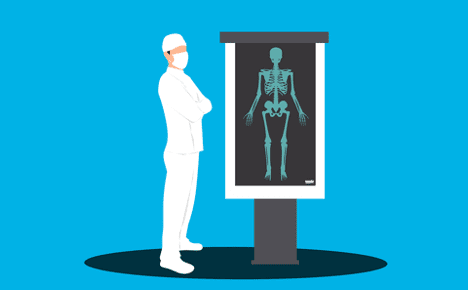
A spate of recent articles points to a shortage of radiologists in the Midwest and elsewhere. Health Imaging points outthat demand outpaces new entrants in the field, while numerous other sources have identified higher-than-normal rates of attrition. That poses challenges. After all, what good are X-ray machines for doctors, or ultrasound equipment, without qualified individuals to operate them? It’s worth asking, therefore, where these shortages came from, and how best to address them.
When Imaging is About More Than Imaging…Why Are There Radiographer Staffing Shortages?
While these shortages may seem like a recent phenomenon, the fact is that they’re anything but. As far back as 2001, the National Institutes of Health was warning that 45 percent of hospitals were understaffed in radiology. While there has been some growth in the sector, it’s been highly uneven; in some places, supply outstrips demand, while it lags far behind in others, leaving Midwest X-ray equipment undermanned. How did we get here?
Lower Interest in Radiology
In a conference call quoted in Health Imaging, two noted pediatric radiology chairs noted a shortage of pediatric radiologists. Their observations, however, could easily apply to the field as a whole; there’s a lack of exposure to, and resultant lack of enthusiasm for, radiology. They stated, “We must all invest in sharing our excitement in our specialty, engaging learners, and educating them about the satisfaction and fulfillment of a career in radiology.”
The long-term nature of these shortages is having a compound effect in 2022. Simply put, the supply of radiologists that exists is commonly older; a significant cohort is approaching retirement age, with some opting for early retirement (or suddenly taking retirement after postponing it amid economic uncertainty). As they age out, there aren’t sufficient radiologists entering the workforce to offset their loss.
Burnout
These days, burnout is endemic in medicine. For radiologists, however, the forces contributing to burnout have been percolating for some time; too many hours, too little respect, too little money, and comparatively low recognition have all contributed to this.
The coronavirus pandemic has exacerbated burnout at all levels in medicine. From doctors and nurses through to diagnosticians and radiologists, this is driving down workforce participation at precisely the time when these individuals are most needed.
A Highly Competitive Recruitment Market
As we noted earlier, the radiologist shortage is unevenly distributed; some areas have a glut, while others are short-staffed. However, economics plays a role, too. Practices and hospital systems with deeper pockets can entice talent, leaving gaps in historically underserved areas, or those whose economies are less-equipped to offer competitive compensation.
How Technology Addresses Staffing Shortages
How, then, do we improve the situation? Equally to the point, how can your practice respond?
At the macro level, it’s clear that strides need to be made in attracting more talent to radiology. More radiology students now lead to more radiologists later, offsetting the demographic trends that are currently draining the profession.
However, change is called for at the micro-level—at hospitals and individual practices alike—as well.
- Embrace emerging technologies that take some of the stress off of radiologists
- Strive for consistency in hardware and software; this will improve morale and efficiency alike
- Ensure that your existing hardware undergoes regular medical equipment maintenance for accuracy, reducing frustration for all involved
- Improve office ergonomics to improve workflow, reduce fatigue, and increase efficiency; take advantage of medical design services to facilitate this
- Create a culture of respect within your practice or department, for the well-being of all on your staff
Smarter Imaging Solutions in the Midwest
There are some gaps in your practice that cannot be papered over with medical equipment sales. That’s exactly why Great Lakes Imaging offers a range of services that includes medical equipment installation in the Midwest, plus repairs, design services, and more—all to help your practice run smarter and help your staff preserve their sanity. For help dealing with uncertain times and an unpredictable market, get in touch today!
